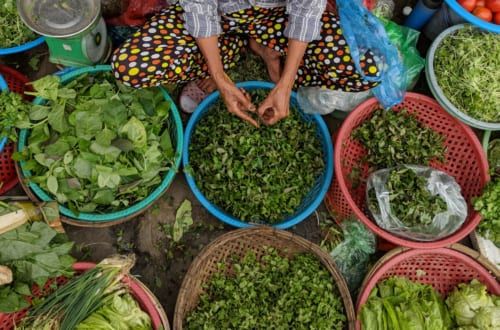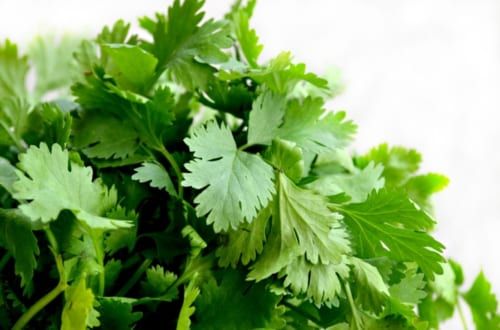
Nam Dinh, Tam Xoan, rice for the kings
Table of contents
Rice is everywhere in Vietnam. On the table, of course, but also in folklore and – in some ways – in the spiritual life. We will therefore not be surprised by the immense variety of rice available, including in Nam Dinh: the long, the round, the fragrant. Or that from such and such a place, such as the Mekong Delta or the plain of Dien Bien, two rice granaries well known to the Vietnamese.
And then there are confidential rices, which could be awarded a PGI, or a PDO. Hai Hau rice, in Nam Dinh province, is one of those rices sought after because they are rare and unique in their flavors.
Hai Hau, modest and royal
The modest district of Hai Hau is located about 135 km southeast of Hanoi, in the province of Nam Dinh.
Its southernmost facade overlooks the Lach Giang estuary of the Ninh Co River, then opens onto the East Sea. Hai Hau is one of the granaries of Nam Dinh as well as the Red River Delta. It has been known since the dawn of time (or almost) for its Tam Xoan rice. But also for its fragrant sticky rice, to name only the best known. And for his longan cake, but that’s another story (and there are also those peanut candies…).
Craftsmanship at Nam Dinh
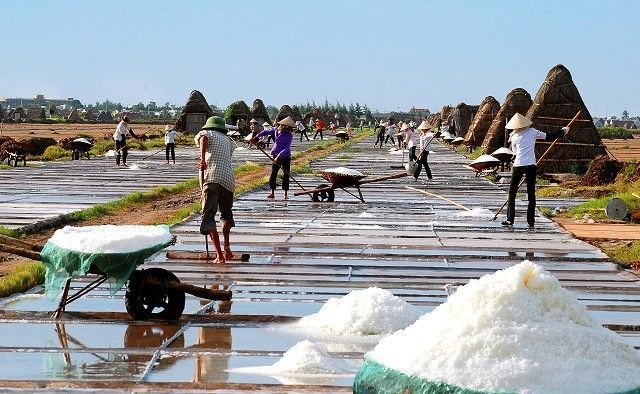

With around 70 artisan villages, the district is also known to be home to many traditional craft villages. Like the making of fishing nets in Hai Trieu, ornamental plants in Hai Phu or the weaving of An Dao mats in Hai An. Traditional techniques are still relevant there. Visit the village of Co Chat to discover the silk weaving process. (starting from the silk farm to the weaving). But also the trumpet village of Pham Phao, the fish sauce village of Sa Chau or the water puppet village of Hong Quan. One can also visit the salt marsh village of Bach Long. There is something for everyone.
Tam Xoan is only grown in 2-3 municipalities with a rather particular quality of soil. A mixture of sandy mud and more or less dry marsh. This gives the immaculate beans that unique flavor that agricultural researchers try to capture in the lab. For centuries, a good part of the harvest went directly to the royal palace, to tell you the very specific quality of Tam Xoan rice. Moreover, nowadays, it enters the kitchen of official receptions and other state banquets. In the past (still today, but to a lesser extent), it was often used during Tet festivals to offer gifts to loved ones, or used on important occasions or even for. More modestly, it’s a treat for a distinguished guest.

Tam Xoan and the perfumed rices
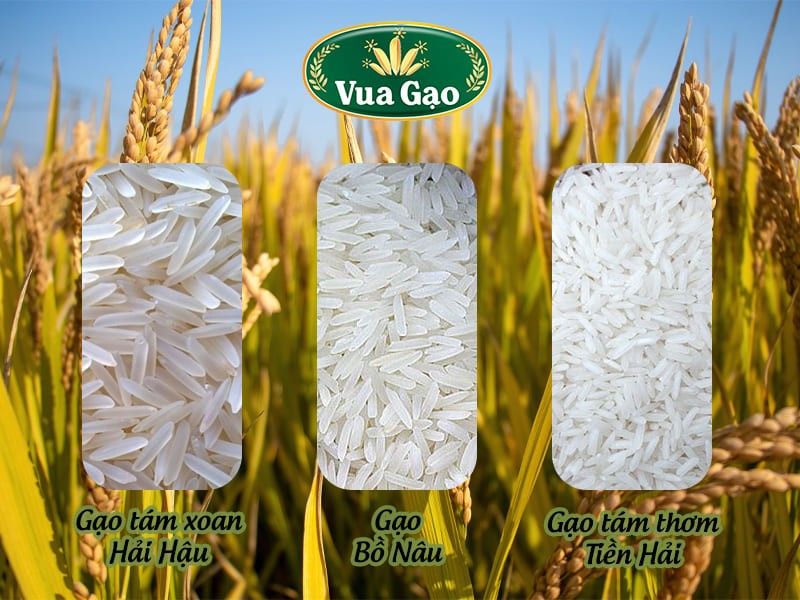 Gao Tam Xoan Hai Hau is part of the fragrant rice family, along with Gao Bo Nau and Gao tam tom Tien Hai (gao meaning rice). Gourmets know Tam Xoan Hai Hau and Bo Nau, but very few know that of Tien Hai. This is grown on the alluvial estuary of the Tra Ly River and was also intended for the royal court.
Gao Tam Xoan Hai Hau is part of the fragrant rice family, along with Gao Bo Nau and Gao tam tom Tien Hai (gao meaning rice). Gourmets know Tam Xoan Hai Hau and Bo Nau, but very few know that of Tien Hai. This is grown on the alluvial estuary of the Tra Ly River and was also intended for the royal court.
The origins of Tam Xoan are uncertain. The Vietnamese – Portuguese – dictionary of Alexandre de Rhodes distinguishes between glutinous rice and plain rice. It does not give the type of rice. Later, another writing will be a little more specific: “Tam Xoan’s plant is high, the cotton is long and soft, the ear is sparse and small, the seeds are a little long, very white, the taste is very soft. “. Local folklore seems to claim that this rice has always existed here. At least since there are kings to give it to – isn’t it called “rice for the king”?
Tam Xoan is part of the collective identity of this small piece of land at the end of the world. There is this anecdote which dates from the dark period 1939-1945. We tend to forget it, but Japan at the time had belligerent designs on Vietnam and in Nam Dinh, the Japanese aggressor had forced the villagers to destroy the rice fields to plant jute there. This was without taking into account the almost visceral love of the inhabitants for their rice. They secretly continued to cultivate it, thus transmitting the plant and a heritage to their children.
Quality of Tam Xoan
This variety of rice is only harvested once a year, from the 10th lunar month. Therefore, the supply of Tam Xoan rice in the market is quite low. Modernism and the Game of Offering and Demand as Law. Nowadays Hai Hau also cultivates one of the best rice in the country at the two deltas: the ST24. As a rice journalist recently wrote, “If ST24 and ST25 rice are likened to a ‘fairy on earth’, a shining pearl in both form and quality, then Tam Xoan is like a sincere country girl with underground charm. . »
We hinted a little earlier, the quality, the nature of the Hai Hau soil directly impacts the quality of Tam Xoan rice. Another factor comes into play: the know-how of the rice farmers. They know how to preserve and transform rice to make it more fragrant, softer and purer.
Tam Xoan, a special rice in Nam Dinh
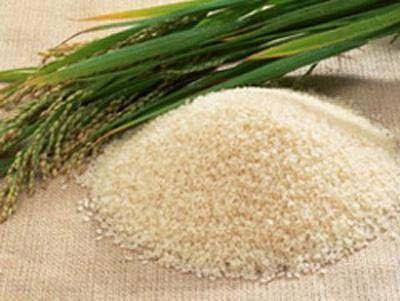 Tam Xoan rice from Hai Hau in Nam Dinh is rather tapered like a girl’s eyebrow. Soft to the touch, very fragrant (once cooked, the aroma will be even more noticeable). It is easy to digest and has a higher nutrient content than other types of rice.
Tam Xoan rice from Hai Hau in Nam Dinh is rather tapered like a girl’s eyebrow. Soft to the touch, very fragrant (once cooked, the aroma will be even more noticeable). It is easy to digest and has a higher nutrient content than other types of rice.
So as not to distort it, it is cooked delicately in clay or cast iron pots. Don’t fry it or stir it into soups. It would lose both its suppleness and, above all, its flavor. It is the karmically designated companion of snakehead fish or even shrimp. The fragrant mixture of rice, the slightly sweet side of the fish, all enhanced with a hint of pepper literally explodes in the mouth for a culinary orgasm (Do not be scarred by words). Writer Kim Lan swore by a hot bowl of Tam Xoan, accompanied by spring rolls with pure fish sauce.
From a particular land, a particular rice is born, with the help of peasants with particular know-how… Gao Tam Xoan Hai Hau is a unique treasure that has inspired many poets and seduced many palates.
Start a trip to discover Hai Hau and Nam Dinh > https://songvoyages.com/en/5-days-tour-north-vietnam-nam-dinh-lan-ha-bay-3-days-cruise/



